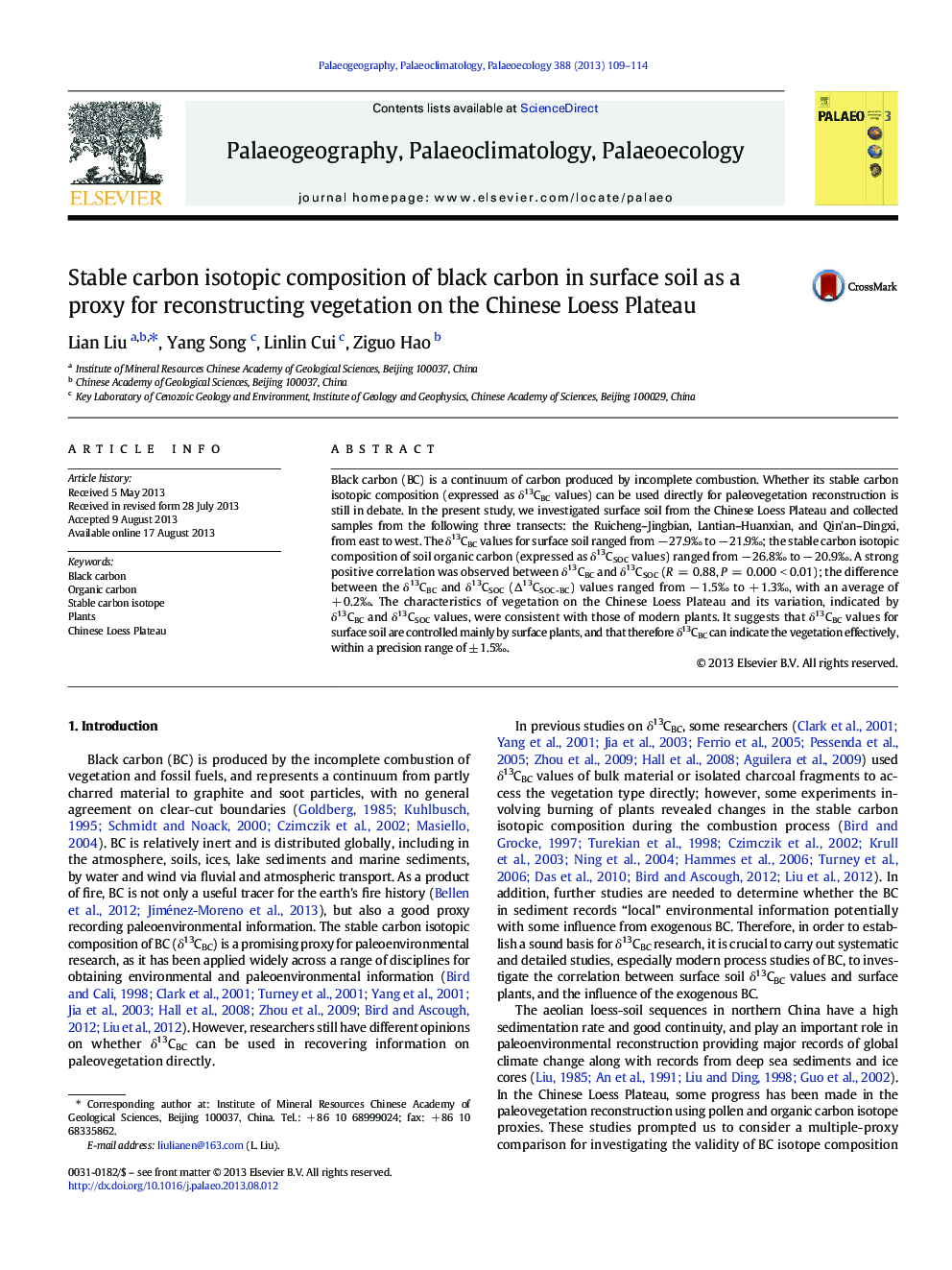| Article ID | Journal | Published Year | Pages | File Type |
|---|---|---|---|---|
| 6350228 | Palaeogeography, Palaeoclimatology, Palaeoecology | 2013 | 6 Pages |
Abstract
Black carbon (BC) is a continuum of carbon produced by incomplete combustion. Whether its stable carbon isotopic composition (expressed as δ13CBC values) can be used directly for paleovegetation reconstruction is still in debate. In the present study, we investigated surface soil from the Chinese Loess Plateau and collected samples from the following three transects: the Ruicheng-Jingbian, Lantian-Huanxian, and Qin'an-Dingxi, from east to west. The δ13CBC values for surface soil ranged from â 27.9â° to â 21.9â°; the stable carbon isotopic composition of soil organic carbon (expressed as δ13CSOC values) ranged from â 26.8â° to â 20.9â°. A strong positive correlation was observed between δ13СBC and δ13CSOC (R = 0.88, P = 0.000 < 0.01); the difference between the δ13СBC and δ13CSOC (Î13СSOC-BC) values ranged from â 1.5â° to + 1.3â°, with an average of + 0.2â°. The characteristics of vegetation on the Chinese Loess Plateau and its variation, indicated by δ13СBC and δ13CSOC values, were consistent with those of modern plants. It suggests that δ13СBC values for surface soil are controlled mainly by surface plants, and that therefore δ13СBC can indicate the vegetation effectively, within a precision range of ± 1.5â°.
Related Topics
Physical Sciences and Engineering
Earth and Planetary Sciences
Earth-Surface Processes
Authors
Lian Liu, Yang Song, Linlin Cui, Ziguo Hao,
